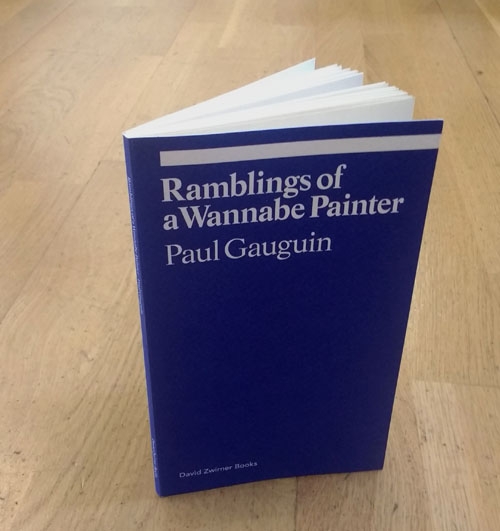‘Criticism teaches us how to think,’ Gauguin writes in ‘Racontars de rapin’ (as this essay is titled in the original French). ‘We are grateful and would like to teach critics something, too. Impossible! They already know everything.’ And it’s with no less irony that Gauguin chose his author’s persona to be that of a man of letters who dabbles in painting. His real goal however is to write about what it means to be a visual artist, hiding within that a lesson in how to look at art. ‘Criticism is our censorship – a watching watcher!’ Gauguin thunders in his opening line, identifying at least part of what it means to be an artist: the harbouring of a special distaste for ‘Professional Typographers’ and other members of the ‘Literati’. And in case that wasn’t clear, he goes on to mischievously select some choice examples of critics who have missed the mark.
There is something disorienting in reading a granular analysis of the Paris art scene and its actors written some 115 years ago by a towering figure in the lineage of modern art, who at the time was living on a small island on the far side of the world. Names, many obscure, are dropped into the text as conversational asides. Their identities and the arguments they represent pop up (and are efficiently footnoted by editor and translator Donatien Grau) and drop off. Sentences are short and witty. Past and present lose their sharp distinctions. ‘Don’t be misled!’, Gauguin continues, ‘I read what people write. Reading in the wild woods is not the same as reading in Paris.’ It is from this distance that he develops, discursively, his main point: that an artist’s ‘Emotions’ are autonomous, unknowable and not subject to the critic’s assessment; and furthermore that they ‘are of an entirely different nature from those of the writer’. That the artist conveys this belief in his final piece of writing, months before he died, in a work that would not be published for another 50 years, adds a layer of poignancy to the irony of the project’s framing. It is republished here by David Zwirner Books as the first in a new series of overlooked masterpieces.
This article was originally published in the March 2017 issue of ArtReview
